Abstract
Clostridium acetobutylicum exhibited diauxie growth in the presence of mixtures of glucose and xylose. Both glucose- and xylose-grown cells had a glucose uptake activity. On the other hand, growth on xylose was associated with the induction of a xylose permease activity, which was repressed by glucose in xylose-induced cells. The rate of sugar uptake with increasing sugar concentrations showed saturation kinetics with an apparent Km of 1.25 X 10(-5) M for glucose and 5 X 10(-3) M for xylose. Concomitant with the production of solvents, the activities of the glucose and xylose transport systems decreased. Among the main products of fermentation, butanol was shown to be a potent inhibitor of the growth of the organism and of the rate of sugar uptake as well as of sugar incorporation into cell materials. These inhibitory effects of butanol were more pronounced in xylose-grown cells than in glucose-grown cells. Butanol completely inhibited growth at a concentration of 14 g/liter for cultures growing on glucose and 8 g/liter for cultures growing on xylose. Concentrations of 7 and 10.5 g/liter of butanol caused a 50% inhibition of the xylose and glucose incorporations into cell materials. These inhibitory levels of butanol were found in typical glucose or xylose fermentation.
Full text
PDF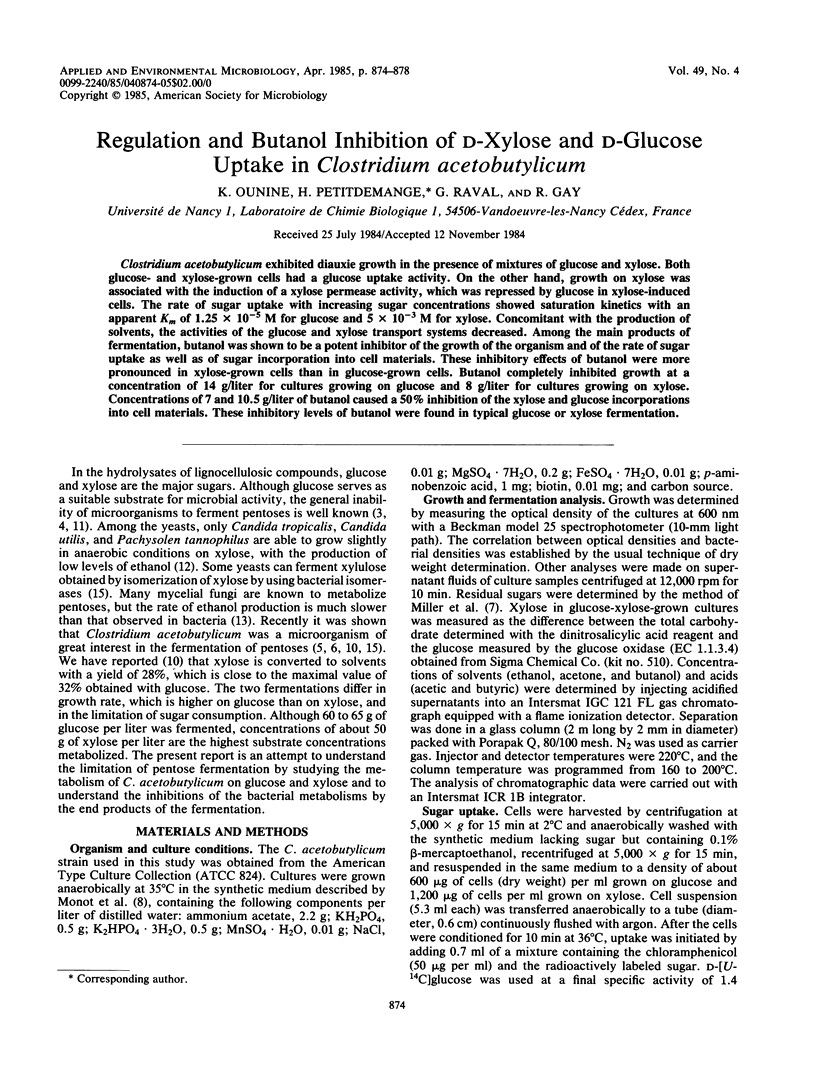
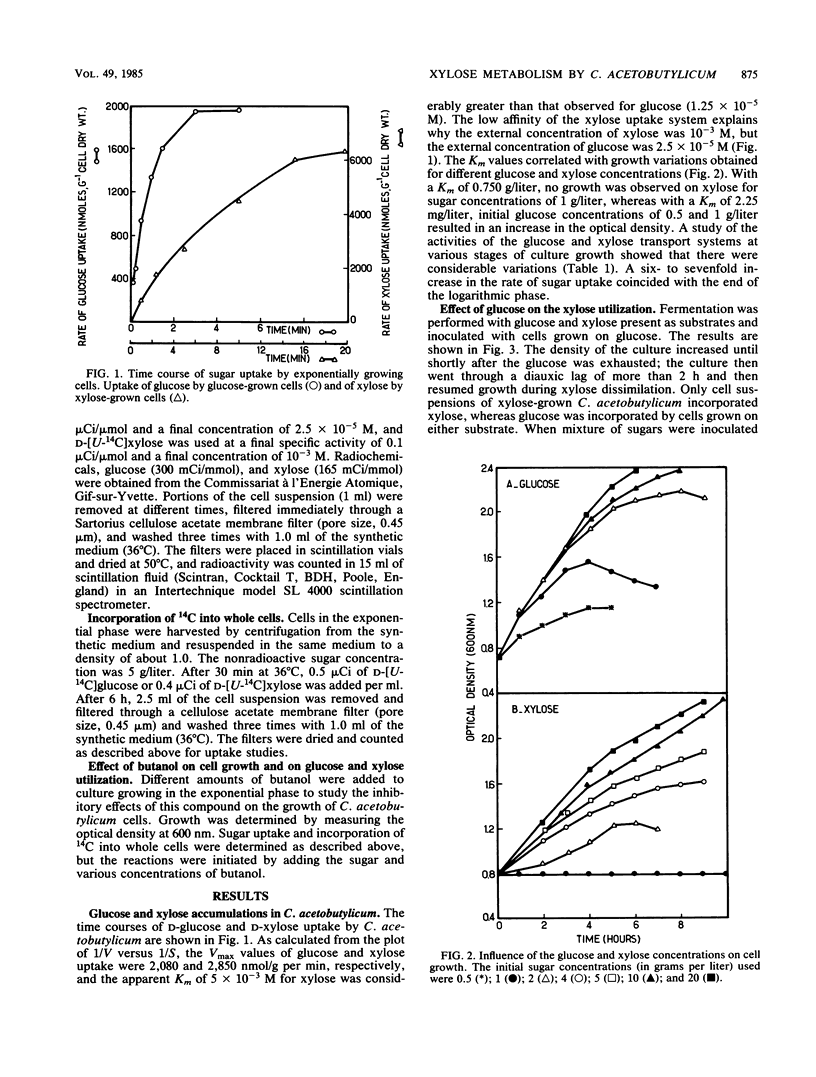
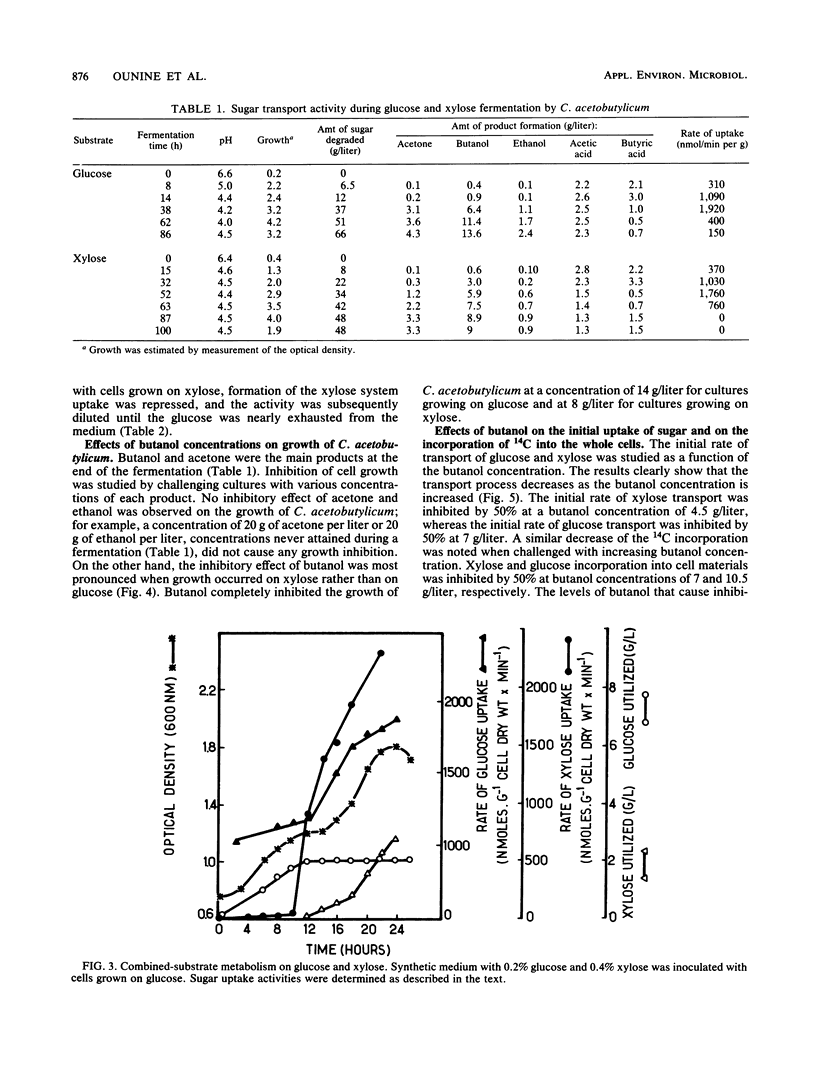
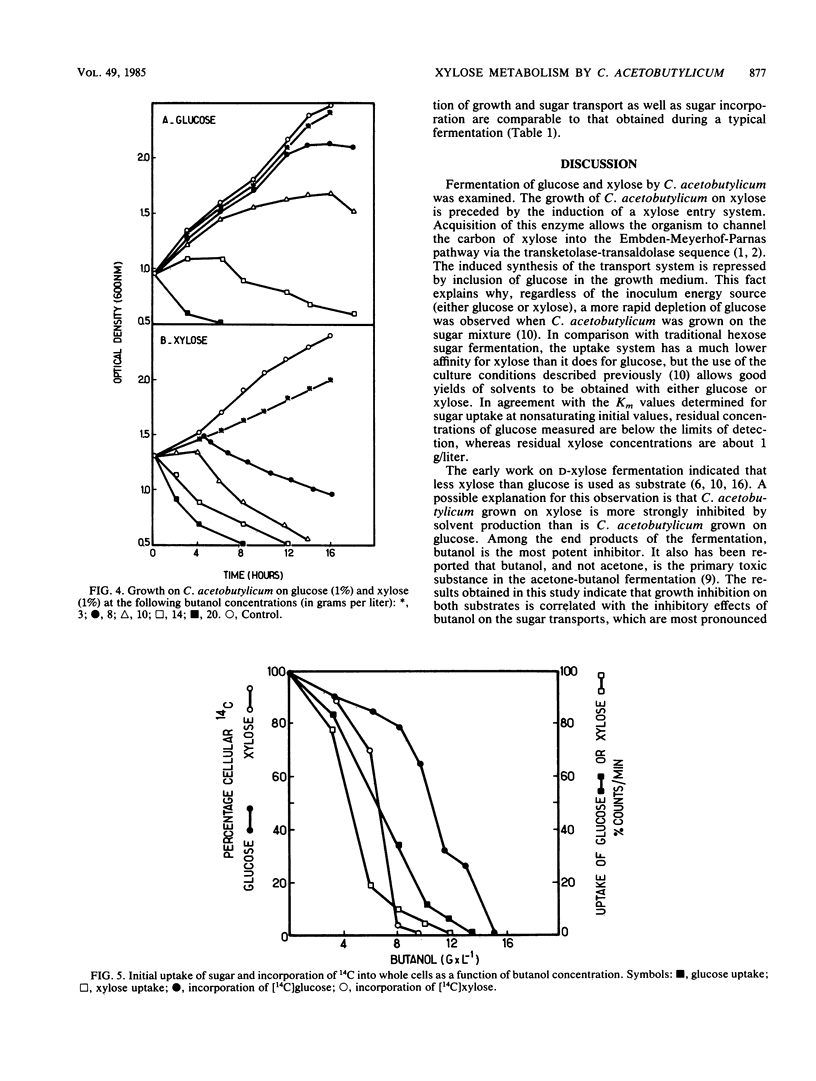
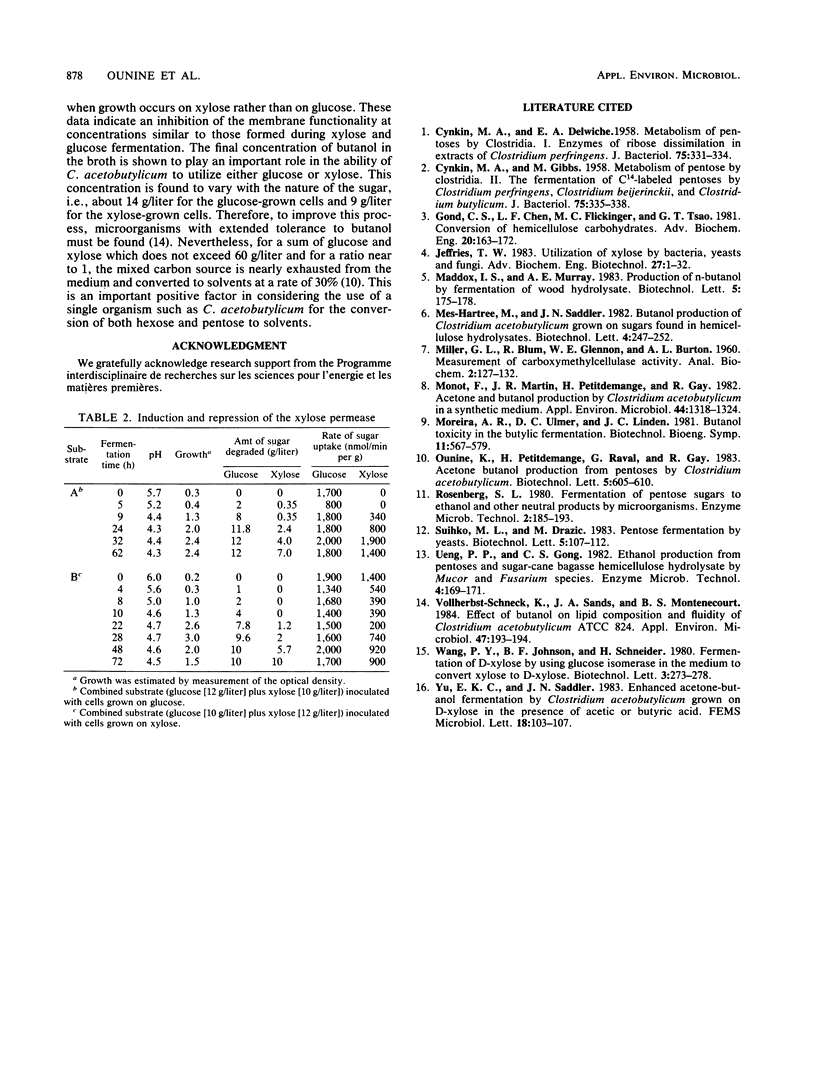
Selected References
These references are in PubMed. This may not be the complete list of references from this article.
- CYNKIN M. A., DELWICHE E. A. Metabolism of pentoses by clostridia. I. Enzymes of ribose dissimilation in extracts of Clostridium perfringens. J Bacteriol. 1958 Mar;75(3):331–334. doi: 10.1128/jb.75.3.331-334.1958. [DOI] [PMC free article] [PubMed] [Google Scholar]
- CYNKIN M. A., GIBBS M. Metabolism of pentoses by clostridia. II. The fermentation of C14-labeled pentoses by Clostridium per fringens, Clostridium beijerinckii, and Clostridium butylicum. J Bacteriol. 1958 Mar;75(3):335–338. doi: 10.1128/jb.75.3.335-338.1958. [DOI] [PMC free article] [PubMed] [Google Scholar]
- Jeffries T. W. Utilization of xylose by bacteria, yeasts, and fungi. Adv Biochem Eng Biotechnol. 1983;27:1–32. doi: 10.1007/BFb0009101. [DOI] [PubMed] [Google Scholar]
- Monot F., Martin J. R., Petitdemange H., Gay R. Acetone and Butanol Production by Clostridium acetobutylicum in a Synthetic Medium. Appl Environ Microbiol. 1982 Dec;44(6):1318–1324. doi: 10.1128/aem.44.6.1318-1324.1982. [DOI] [PMC free article] [PubMed] [Google Scholar]
- Vollherbst-Schneck K., Sands J. A., Montenecourt B. S. Effect of butanol on lipid composition and fluidity of Clostridium acetobutylicum ATCC 824. Appl Environ Microbiol. 1984 Jan;47(1):193–194. doi: 10.1128/aem.47.1.193-194.1984. [DOI] [PMC free article] [PubMed] [Google Scholar]


